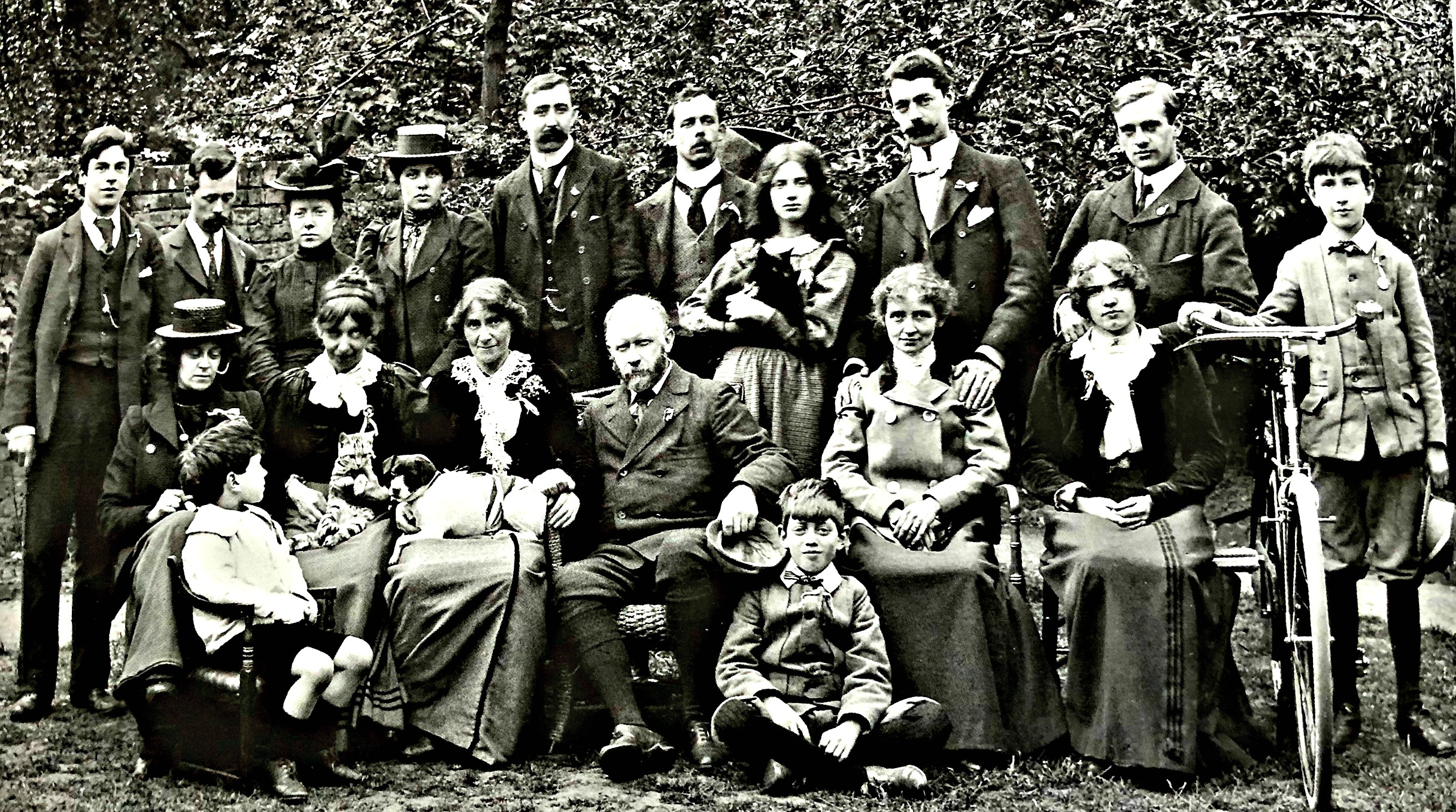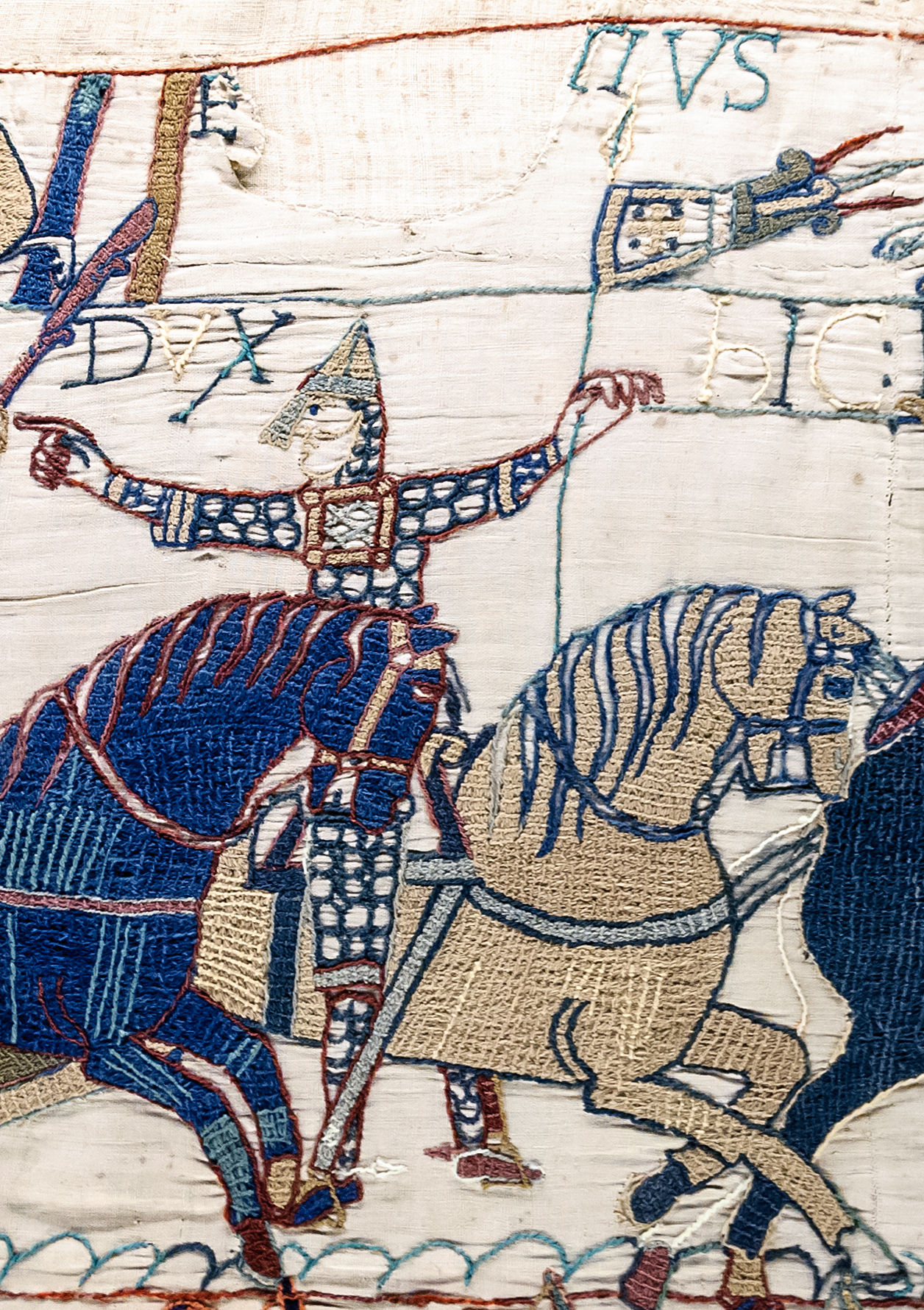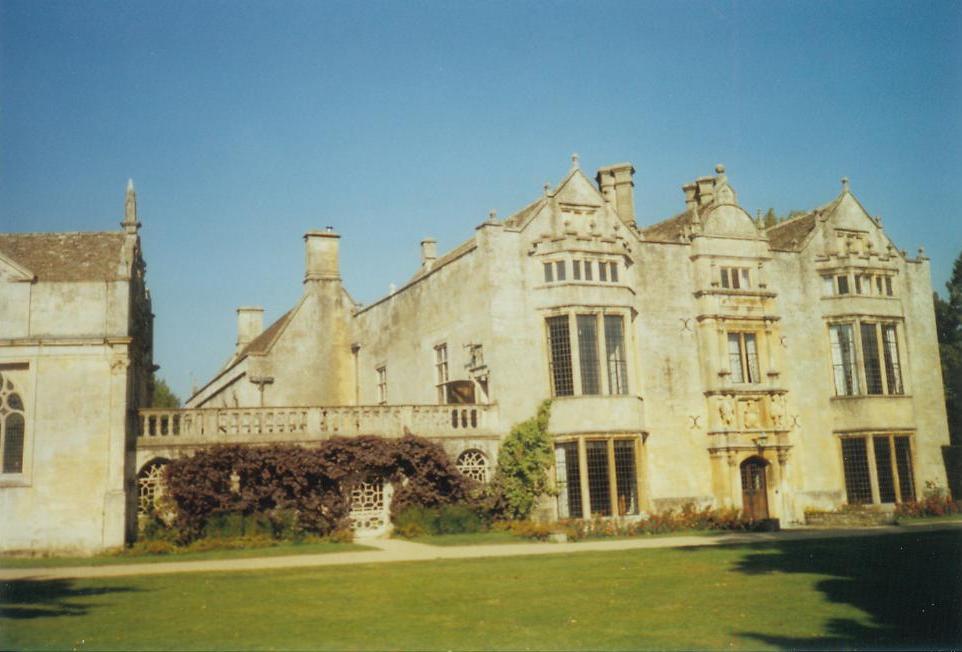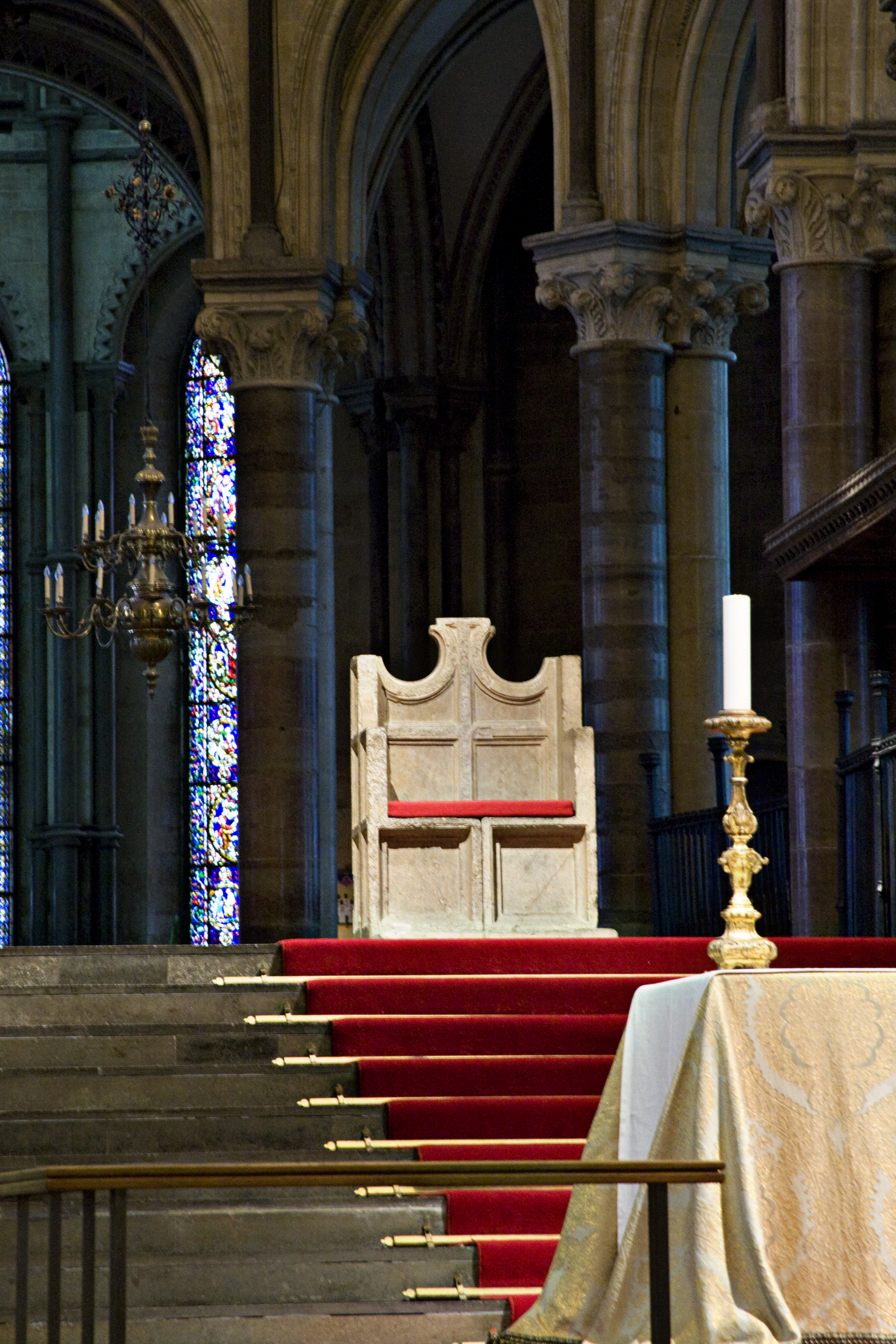|
Karl Parsons
Karl Bergemann Parsons (23 January 1884 – 30 September 1934) was a British stained glass artist associated with the Arts and Crafts movement. Early life, 1884 – 1898 Parsons was born in Peckham in south London on 23 January 1884, the 12th and youngest child of Arthur William Parsons (1838–1901), a foreign language translator, and Emma Matilda Parsons, née Bergemann (1837–1914). He was christened with the names Charles Bergemann, though the family always called him Karl, the name he was to use in later life. From 1893 to 1898 he attended Haberdashers' Aske's Hatcham College, Haberdashers' Aske's Hatcham Boys School at New Cross in south London. Introduction to Whall, 1898 – outbreak of war One of Parsons' older sisters was the artist Beatrice Emma Parsons (1869–1955). Beatrice worked for a while in Christopher Whall's studio and when Parsons left school, Beatrice persuaded Whall to take him on as an apprentice. Whall it seems saw promise in Parsons' Sketch (drawi ... [...More Info...] [...Related Items...] OR: [Wikipedia] [Google] [Baidu] |
Peckham
Peckham ( ) is a district in south-east London, within the London Borough of Southwark. It is south-east of Charing Cross. At the 2001 Census the Peckham ward had a population of 14,720. History "Peckham" is a Saxon place name meaning the village of the River Peck, a small stream that ran through the district until it was enclosed in 1823. Archaeological evidence indicates earlier Roman occupation in the area, although the name of this settlement is lost. ''The Oxford Dictionary of English Place-names'' (1991, 1998) gives the origin as from the Old English *''pēac'' and ''hām'' meaning ‘homestead by a peak or hill’. The name of the river is a back-formation from the name of the village. Peckham Rye is from Old English ''rīth'', stream. Following the Norman Conquest, the manor of Peckham was granted to Odo of Bayeux and held by the Bishop of Lisieux. It was described as being a hamlet on the road from Camberwell to Greenwich. Peckham came within the newly created M ... [...More Info...] [...Related Items...] OR: [Wikipedia] [Google] [Baidu] |
John Fulleylove
John Fulleylove (18 Aug 1845 – 22 May 1908) was an English landscape artist and illustrator. Life Born in Leicester, he originally trained as an architect with local firm "Shenton and Baker", before becoming an artist in watercolours and oils. He exhibited widely in England from 1871 at venues in London such as the Royal Academy, Royal Society of British Artists, Fine Art Society, Royal Institute of Painters in Water Colours, Royal Institute of Oil Painters, and in many other regional towns and cities. He became a member of the RI in 1879 and the ROI in 1883. Abroad, he painted in France, Italy, Greece and the Middle East. His watercolour illustrations appeared in several travel books, such as those by A & C Black (see below). Fulleylove died on 22 May 1908 at his Hampstead home and was buried on the eastern side of Highgate Cemetery. Family In 1878, Fulleylove married fellow artist Elizabeth Elgood.Elizabeth Elgood came from a family of artists. She had seven brothers ... [...More Info...] [...Related Items...] OR: [Wikipedia] [Google] [Baidu] |
Apse
In architecture, an apse (: apses; from Latin , 'arch, vault'; from Ancient Greek , , 'arch'; sometimes written apsis; : apsides) is a semicircular recess covered with a hemispherical Vault (architecture), vault or semi-dome, also known as an ''exedra''. In Byzantine architecture, Byzantine, Romanesque architecture, Romanesque, and Gothic architecture, Gothic Architecture of cathedrals and great churches, Christian church architecture, church (including cathedral and abbey) architecture, the term is applied to a semi-circular or polygonal termination of the main building at the liturgical east and west, liturgical east end (where the altar is), regardless of the shape of the roof, which may be flat, sloping, domed, or hemispherical. Smaller apses are found elsewhere, especially in shrines. Definition An apse is a semicircular recess, often covered with a hemispherical vault. Commonly, the apse of a church, cathedral or basilica is the semicircular or polygonal termination to the ... [...More Info...] [...Related Items...] OR: [Wikipedia] [Google] [Baidu] |
Embroidery
Embroidery is the art of decorating Textile, fabric or other materials using a Sewing needle, needle to stitch Yarn, thread or yarn. It is one of the oldest forms of Textile arts, textile art, with origins dating back thousands of years across various cultures. Common Embroidery stitch, stitches found in early embroidery include the chain stitch, Buttonhole stitch, buttonhole or blanket stitch, running stitch, satin stitch, and cross stitch. Modern embroidery continutes to utilize traditional techniques, though many contemporary stitches are exclusive to machine embroidery. Embroidery is commonly used to embellish accessories and garments is usually seen on quilts, clothing, and accessories. In addition to thread, embroidery may incorporate materials such as Pearl, pearls, Bead, beads, Quill, quills, and Sequin, sequins to highlight texture and design. Today, embroidery serves both decorative and functional purposes and is utilized in fashion expression, cultural identity, and ... [...More Info...] [...Related Items...] OR: [Wikipedia] [Google] [Baidu] |
Burford
Burford () is a town on the River Windrush, in the Cotswold hills, in the West Oxfordshire district of Oxfordshire, England. It is often referred to as the 'gateway' to the Cotswolds. Burford is located west of Oxford and southeast of Cheltenham, about from the Gloucestershire boundary. The toponym derives from the Old English words ''burh'' meaning fortified town or hilltown and '' ford'', the crossing of a river. The 2011 Census recorded the population of Burford parish as 1,422. Economic and social history The town began in the middle Saxon period with the founding of a village near the site of the modern priory building. This settlement continued in use until just after the Norman Conquest of England when the new town of Burford was built. On the site of the old village a hospital was founded which remained open until the Dissolution of the Monasteries by King Henry VIII. The modern priory building was constructed some 40 years later, in around 1580. The town centre ... [...More Info...] [...Related Items...] OR: [Wikipedia] [Google] [Baidu] |
Ledbury
Ledbury is a market town and civil parish in the county of Herefordshire, England, lying east of Hereford, and west of the Malvern Hills. It has a significant number of Tudor style timber-framed structures, in particular along Church Lane and High Street. One of the most outstanding is Ledbury Market Hall, built in 1617, located in the town centre. Other notable buildings include the parish church of St. Michael and All Angels, the Painted Room (containing sixteenth-century frescoes), the Old Grammar School, the Barrett-Browning memorial clock tower (designed by Brightwen Binyon and opened in 1896 to house the library until 2015), nearby Eastnor Castle and the St. Katherine's Hospital site. Founded , this is a rare surviving example of a hospital complex, with hall, chapel, a Master's House (fully restored and opened in March 2015 to house the Library), almshouses and a timber-framed barn. History Ledbury is a borough whose origins date to around AD 690. In the Domesday ... [...More Info...] [...Related Items...] OR: [Wikipedia] [Google] [Baidu] |
Ashbourne, Derbyshire
Ashbourne is a market town in the Derbyshire Dales district in Derbyshire, England. Its population was measured at 8,377 in the 2011 census and was estimated to have grown to 9,163 by 2019. It has many historical buildings and independent shops. The town offers a historic annual Shrovetide football match. Its position near the southern edge of the Peak District makes it the closest town to Dovedale, to which Ashbourne is sometimes referred to as the gateway. The town is west of Derby, south-east of Buxton, east of Stoke-on-Trent, south-south-east of Manchester, south-west of Sheffield and north of Lichfield. Nearby towns include Matlock, Uttoxeter, Leek, Cheadle and Bakewell. History The town's name derives from the Old English ''æsc-burna'' meaning "stream with ash trees". Ashbourne was granted a market charter in 1257. In medieval times it was a frequent rest stop for pilgrims walking "St Non's Way" to the shrine of Saint Fremund at Dunstable in Bedfordshi ... [...More Info...] [...Related Items...] OR: [Wikipedia] [Google] [Baidu] |
Tonbridge School
Tonbridge School is a public school (English fee-charging boarding and day school for boys aged 13–18) in Tonbridge, Kent, England, founded in 1553 by Sir Andrew Judde (sometimes spelt Judd). It is a member of the Eton Group and has close links with the Worshipful Company of Skinners, one of the oldest London livery companies. There are currently around 800 boys in the school, aged between 13 and 18. The school occupies a site of on the edge of Tonbridge, and is largely self-contained, though most of the boarding and day houses are in nearby streets. Since its foundation, the school has been rebuilt twice on the original site. For the academic year 2023/24, Tonbridge charges full boarders up to £16,648 per term and £12,490 per term for day pupils, making it the 4th and 6th most expensive HMC boarding and day school respectively. The headmaster is James Priory who began his tenure at the school in 2018. The school is one of only a very few of the ancient public sch ... [...More Info...] [...Related Items...] OR: [Wikipedia] [Google] [Baidu] |
Southwell Minster
Southwell Minster_(church), Minster, strictly since 1884 Southwell Cathedral, and formally the Cathedral and Parish Church of the Blessed Virgin Mary, is a Church of England cathedral in Southwell, Nottinghamshire, England. The cathedral is the seat of the bishop of Southwell and Nottingham and the Mother church#Cathedral, mother church of the diocese of Southwell and Nottingham; it is governed by a Dean of Southwell, dean and Chapter (religion), chapter. It is a grade I listed building. The current church is the successor to one built in 956 by Oscytel, archbishop of York. Some late eleventh century fabric survives from this church, but the majority of the building dates from between 1108 and , when it was reconstructed in the Romanesque architecture, Romanesque style. The chancel was rebuilt from 1234 to 1251 in the Early English Gothic style. In 1288 the chapter house was built; it is decorated with carved foliage of exceptional quality. The minster's rood screen is also of hig ... [...More Info...] [...Related Items...] OR: [Wikipedia] [Google] [Baidu] |
Canterbury Cathedral
Canterbury Cathedral is the cathedral of the archbishop of Canterbury, the spiritual leader of the Church of England and symbolic leader of the worldwide Anglican Communion. Located in Canterbury, Kent, it is one of the oldest Christianity, Christian structures in England and forms part of a World Heritage Site. Its formal title is the Cathedral and Metropolitical Church of Christ, Canterbury. Founded in 597, the cathedral was completely rebuilt between 1070 and 1077. The east end was greatly enlarged at the beginning of the 12th century, and largely rebuilt in the Gothic style following a fire in 1174, with significant eastward extensions to accommodate the flow of pilgrims visiting the shrine of Thomas Becket, the archbishop who was murdered in the cathedral in 1170. The Norman nave and transepts survived until the late 14th century, when they were demolished to make way for the present structures. Before the English Reformation, the cathedral was part of a Benedictine monas ... [...More Info...] [...Related Items...] OR: [Wikipedia] [Google] [Baidu] |
Gloucester Cathedral
Gloucester Cathedral, formally the Cathedral Church of St Peter and the Holy and Indivisible Trinity and formerly St Peter's Abbey, in Gloucester, England, stands in the north of the city near the River Severn. It originated with the establishment of a minster, Gloucester Abbey, dedicated to Saint Peter and founded by Osric, King of the Hwicce, in around 679. The subsequent history of the church is complex; Osric's foundation came under the control of the Benedictine Order at the beginning of the 11th century and in around 1058, Ealdred, Bishop of Worcester, established a new abbey "a little further from the place where it had stood". The abbey appears not to have been an initial success, by 1072, the number of attendant monks had reduced to two. The present building was begun by Abbott Serlo in about 1089, following a major fire the previous year. Serlo's efforts transformed the abbey's fortunes; rising revenues and royal patronage enabled the construction of a major church ... [...More Info...] [...Related Items...] OR: [Wikipedia] [Google] [Baidu] |
Edward Woore
Edward Woore or Davie Woore (1880–1960) was a British stained glass artist''Edward Woore'' Mapping the Practice and Profession of Sculpture in Britain and Ireland 1851–1951, University of Glasgow History of Art and HATII, online database 2011. Retrieved 30 September 2012.''Architects and Artists W-X-Y-Z: E Woore''. Sussex Parish Churches. Retrieved 30 September 2012. and member of the British Society of Master Glass Painters.David Buckman. ''Artists in Britain since 19 ... [...More Info...] [...Related Items...] OR: [Wikipedia] [Google] [Baidu] |







